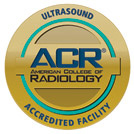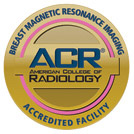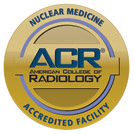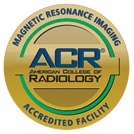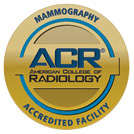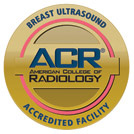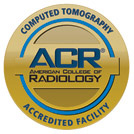Combined with imaging, radiofrequency ablation (RFA) is used to identify and shrink tumors, manage venous insufficiency and chronic pain. After a needle is inserted through the skin, a high-frequency electrical current passes through to heat the targeted tissue. This decreases growth size and can stop pain signals from spreading throughout the body.
What Is Radiofrequency Ablation?
RFA involves passing a needle through the skin toward a joint, area of tissue or growth in the body. Computed tomography (CT), ultrasound or magnetic resonance imaging (MRI) can be used to guide the needle. Once the needle is in place a high-frequency electrical current then passes from an electrode to create a small, concentrated area of heat. This solution destroys the cells at the targeted spot, while a ground pad placed on the body helps focus the current’s direction.
Two types of needles may be used: Straight or straight and hollow. The hollow option contains multiple retractable electrons. The procedure also involves a radiofrequency generator connected to the needle via insulated wires to the grounding pads.
During the procedure, an electrical current specified by the range of radiofrequency waves passes between the needle and grounding pads.
This relationship creates heat to kill select cells and closes off smaller blood vessels to minimize bleeding. Following the procedure, the body will replace dead cells with scar tissue.
Radiofrequency ablation is a minimally invasive procedure that typically takes place in an outpatient setting. General anesthesia is not used, but patients may be given a numbing agent and medication for relaxation.
Patients lie on their back or stomach before the technologist applies a local anesthetic to the targeted area. At this stage, the needle will be inserted with the help of imaging technology. Once the precise spot is reached, the radiofrequency current is generated.
There are few complications associated with this procedure and the risks are low. However, patients should seek medical attention if they experience infection or bleeding. Temporary side effects like weakness, numbness, swelling or bruising near the incision site may occur.
Who Should Have Radiofrequency Ablation?
Doctors typically recommend RFA for:
- Liver Cancer: When small tumors have not responded to traditional treatments, RFA is an alternative. The procedure may be requested for liver cancer or colon cancer that has metastasized in the liver. RFA is effective for tumors 1.5 inches or smaller in diameter and may be used alone or with chemotherapy or radiation therapy.
- Thyroid Nodules: RFA offers an alternative to open surgery to treat certain thyroid nodules and patients recover in less time. Initially, a biopsy or fine needle aspiration is performed to ensure the nodule is benign. Your doctor may also recommend RFA to treat smaller malignant nodules.
- Nerve Ablation: For patients with chronic pain, RFA targets and cuts off nerve fibers transmitting pain signals from the spinal cord to the brain. This procedure is not designed to deliver permanent results and patients typically undergo RFA once a year to manage their condition. RFA is recommended for patients with arthritis, degenerative back and neck problems or lower back pain.
- Venous Insufficiency: To address insufficient blood flow from a leg vein to the heart, RFA seals off the malfunctioning vein. This allows blood to travel through healthy, functioning vessels, rather than pool in the lower extremities.
Preparation for Radiofrequency Ablation
Before the procedure, patients are advised to fast for at least six hours, however clear liquids are acceptable. Patients may also need to adjust their medication dosage, including for insulin, aspirin and NSAIDs. Patients may take other medications with small sips of water.
On the day of the procedure, arrive in loose comfortable clothing and leave any jewelry or metal objects at home. Due to radiation risks, tell your doctor if you are or think you may be pregnant ahead of time. A ride home should be arranged after undergoing RFA. You’re further cautioned to avoid operating heavy machinery for at least 24 hours.
As the procedure begins, local anesthetic will be administered by IV to reduce potential discomfort. The radiologist will then make a small incision to insert a needle using MRI, CT scan, ultrasound or X-ray technology for guidance to the exact spot. A microelectrode then passes through the needle to start stimulating the area.
RFA will be performed as a surgical procedure, percutaneous injection or laparoscopy, based on how the needle and electrodes will be inserted through the skin. Radiofrequency energy is generated once the electrode is properly placed. The needle may be inserted more than once, based on the number of tumors or energy needed to destroy tissue in an area.
Following the procedure, the electrode is removed and pressure is applied to the area, along with a dressing if needed. RFA typically takes 10 to 30 minutes, although more time may be needed for multiple insertions. The full procedure may take up to three hours.
Patients will not leave immediately after RFA. Instead, you’ll be observed in a recovery room where your pulse and blood pressure are checked until you’re stable enough to leave with your driver.
Refrain from any strenuous activity and to not take a bath for the next one to two days. You can shower and go back to your normal diet and medication schedule after the procedure.
During recovery, you may notice numbness that disappears within a few hours and soreness that lasts for two to three days. You’re advised to manage these sensations by alternating ice and heat with pain medication. If the weakness does not subside, worsens or you see redness or swelling at the injection site, seek emergency medical attention right away.
Has your doctor recommended radiofrequency ablation? Contact Midstate Radiology Associates to make an appointment today.





